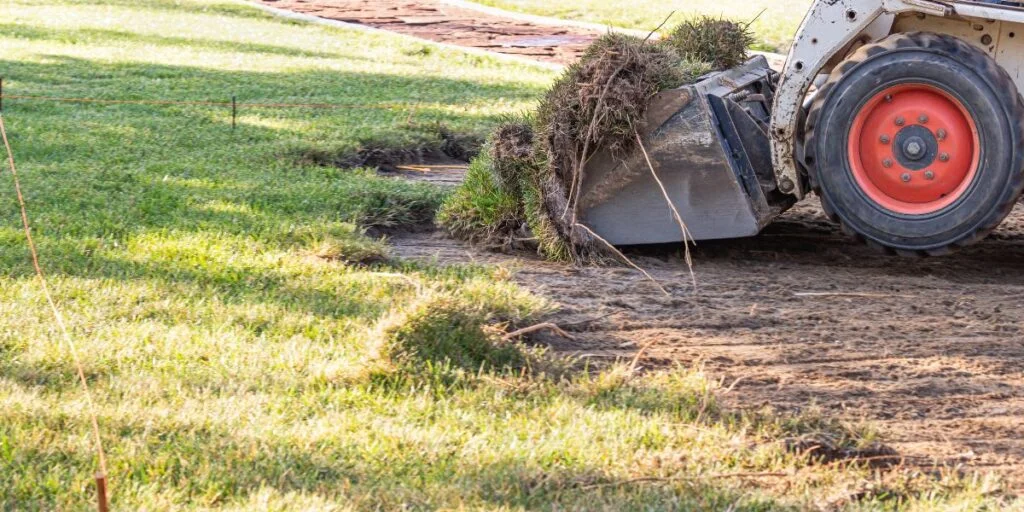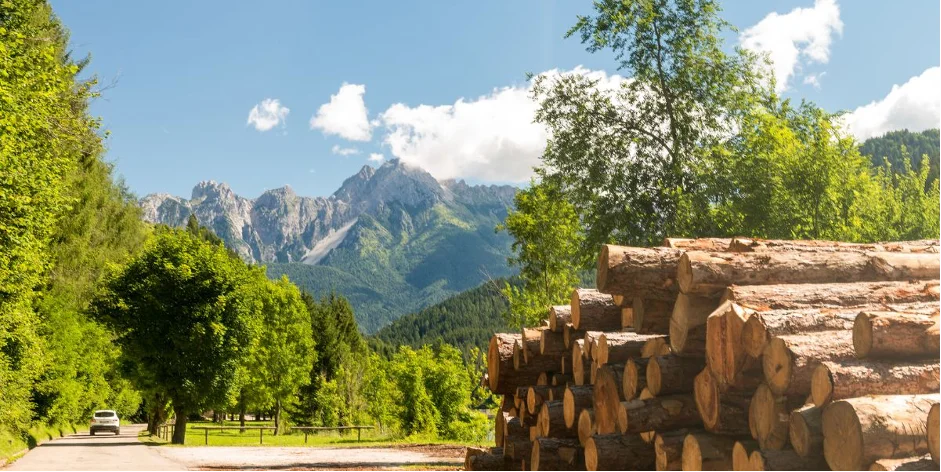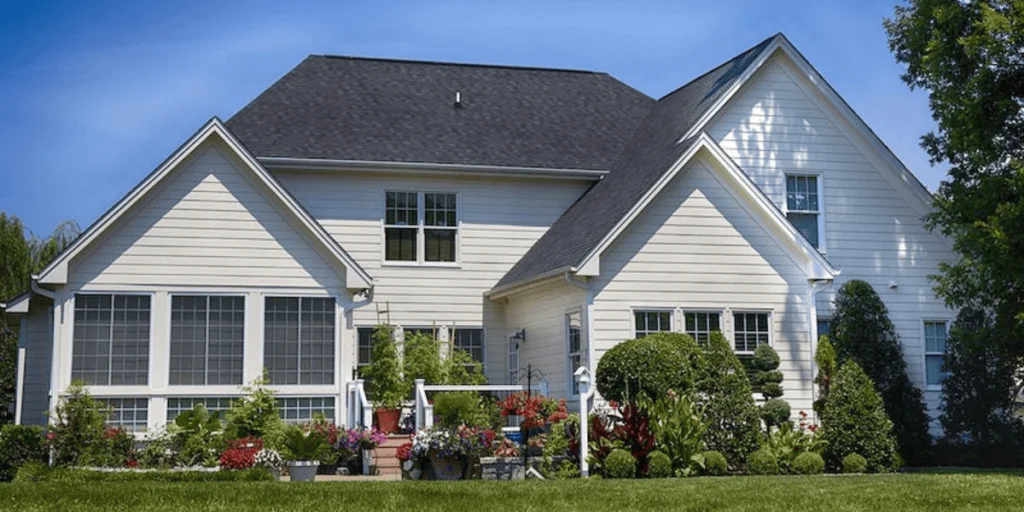Grading in landscaping is a foundational element that can dramatically affect the aesthetics, functionality, and health of a property. It involves the process of shaping the land to direct water flow, improve drainage, and create visually appealing terrain. Whether it’s a residential backyard or a sprawling commercial space, effective grading is essential for preventing erosion, and water damage, and ensuring the longevity of landscape investments. This comprehensive guide delves into the nuances of land grading, covering its types, significance, and practical implementation strategies for property owners.
What is Grading in Landscaping?
Grading in landscaping refers to the art and science of adjusting the soil’s slope and elevation to achieve desired landscape outcomes. It’s a crucial step in landscaping projects, aimed at controlling water drainage, enhancing aesthetic appeal, and preparing the site for planting and construction activities.
Proper grading ensures that water moves away from structures to prevent flooding and soil erosion, establishing a strong foundation for any landscaping project.
Types of Land Grading
Bobcat Machinery
Bobcat machinery grading involves using compact loaders to efficiently move soil and reshape the land. This method is favored for its precision and flexibility, allowing landscapers to tackle various grading projects, from small residential areas to larger commercial spaces. Bobcat machines are versatile and capable of performing tasks such as soil spreading, leveling, and even removing debris.
Drainage Solutions
Drainage solution grading focuses on creating slopes and channels to direct water away from buildings and vulnerable areas of the landscape. This type of grading is crucial in preventing water accumulation that can lead to flooding, foundation damage, and unhealthy plant growth. Techniques include creating swales, installing French drains, and sculpting the terrain to facilitate natural water runoff.
Excavation
Excavation grading involves the removal of soil, rocks, and other materials to adjust the land’s elevation or create specific features like ponds or trenches. It’s a significant aspect of grading that can transform the landscape, making it suitable for various design elements and functional needs. Excavation requires careful planning to maintain soil stability and prevent erosion.
Surface Smoothing
Surface smoothing grading is the fine-tuning process that follows major soil movements. It involves leveling and smoothing the surface to prepare it for sod installation, planting, or other landscaping activities. This step is crucial for eliminating uneven areas that can collect water or hinder plant growth, ensuring a visually pleasing and functional outdoor space.
Topsoil Installation
Topsoil installation grading enhances the soil’s quality and depth, preparing it for healthy plant growth. This involves spreading a layer of topsoil over the graded area, which can improve drainage, nutrient content, and soil structure. It’s an essential step for gardens, lawns, and any landscaping area that requires robust plant health.
How Do I Know If My Property Has Poor Grading?
Identifying poor grading on your property is crucial to prevent potential water damage and landscaping issues. Here’s how you can tell if your property suffers from poor grading:
Water Pooling: After a rainstorm, observe if water gathers close to your home’s foundation or in specific areas of your yard. Water should flow away from the house, not towards it.
Basement Leaks or Dampness: Frequent leaks or a persistently damp basement can indicate that surface water is not properly diverted away from your home, a sign of poor grading.
Erosion Signs: Look for areas where soil seems to be washed away, especially around the foundation. This can indicate that water flow is not being managed correctly, possibly due to inadequate grading.
Sloping Towards the House: Ideally, the ground should slope away from your home. Use a level to check the slope of your yard. If the slope is towards your house, this is a direct sign of poor grading.
Cracked Foundations: Poor grading can lead to water accumulating around your foundation, which can eventually cause cracks and structural damage.
Gutter Downspout Issues: Check if downspouts are directing water away from the house. If water from downspouts is pooling near the foundation, this could exacerbate poor grading issues.
Addressing these issues promptly can prevent long-term damage and improve the landscape’s health and appearance.
How to Grade Your Land?
DIY Tips
For simple grading projects, homeowners can start by assessing the land’s slope and identifying drainage issues. Using tools like a landscaper’s rake for smaller areas or renting a bobcat for larger projects can be effective. Creating gentle slopes away from the house and installing shallow ditches or swales can improve drainage and prevent erosion.
When to Call Professionals
Large-scale projects, steep slopes, or significant drainage issues warrant professional grading services. Experts have the knowledge, experience, and equipment to handle complex grading challenges, ensuring the land is properly contoured for drainage and aesthetic appeal. Professional grading is also crucial when dealing with regulatory compliance and erosion control measures.
Choosing a Landscaping Contractor
Select a landscaping contractor with experience in landscape grading and a portfolio of similar projects. Look for licensing, insurance, and positive reviews from past clients. A reputable landscaping contractor will offer a detailed plan, including timelines, costs, and the grading methods best suited for your property. Communication and transparency are key in selecting the right professional for the job.
Things to Remember while Land Grading
When embarking on a land grading project, it’s crucial to keep several key points in mind to ensure the longevity and functionality of your landscape. Here are essential considerations:
- Clearly define the goal of grading your land, whether it’s for improving drainage, preparing for new construction, or enhancing the aesthetics of your property.
- Ensure the grading plan directs water away from buildings to prevent foundation damage. Aim for a slope that moves water towards designated drainage areas.
- Before starting, check with local authorities for any permits or regulations related to land grading in your area to avoid legal issues.
- Preserve the natural features and vegetation of your land wherever possible. This can help prevent erosion and maintain the ecological balance.
- Understand the type of soil on your property as different soils react differently to water and can affect the grading outcome.
- For complex projects, consider hiring a professional landscaper or engineer who specializes in grading. They can ensure the job is done correctly and efficiently.
- Plan your grading considering future land use. Ensure it supports any structures, landscaping, or other projects you intend to undertake.
- Implement erosion control techniques, such as seeding or installing erosion blankets, to protect the graded land until vegetation is established.
Remembering these points can significantly impact the success of your grading project, ensuring it meets your needs while also protecting your property and the environment.
Conclusion
Grading in landscaping is a critical process that affects a property’s functionality, safety, and aesthetics. Understanding the different types of grading and when to seek professional help can empower property owners to make informed decisions about their landscapes. With the right approach, grading can enhance the beauty and value of any outdoor space, making it more enjoyable and sustainable for years to come.
Cutters Landscaping Can Effectively & Professionally Grade Your Landscape
Cutters Landscaping in Great Hills Austin, Texas, stands out as a leader in transforming outdoor spaces. With a keen understanding of Austin’s unique climate, we can professionally and effectively grade your landscape to ensure optimal water drainage, prevent erosion, and enhance the overall aesthetics of your property.
Our team of expert landscapers leverages state-of-the-art equipment and techniques to tailor a solution that not only meets but exceeds your landscaping needs. Trust Cutters Landscaping to elevate your outdoor space with precision and care.
FAQs
Q.1 What is a graded landscape?
A graded landscape refers to land intentionally shaped and contoured to manage water flow and soil erosion. This practice is essential in agriculture, landscaping, and urban development to ensure proper drainage, enhance aesthetic appeal, and maintain environmental health by controlling water runoff and sediment transport.
Q.2 What is the difference between land leveling and land grading?
Land leveling is the process of making the land surface completely flat, primarily used in agriculture to improve irrigation efficiency and crop yields. Land grading, however, involves shaping the land to a specific slope or grade for drainage and erosion control, often used in construction and landscaping projects.
Q.3 What is the use of land grading?
Land grading is the process of leveling or sloping land to prepare it for construction, improve drainage, reduce erosion, and enhance landscaping. It ensures stability for foundations, controls water flow around structures, and creates aesthetically pleasing terrains, making it essential for agricultural, residential, and commercial developments.
Q.4 Does my yard need to be graded?
Your yard may need grading if you experience water pooling, improper drainage, or soil erosion issues. Grading ensures proper water diversion away from structures, preventing foundation damage. Additionally, if you’re planning new construction, landscaping projects, or experiencing uneven lawn areas, grading can help create a more functional and attractive outdoor space.





